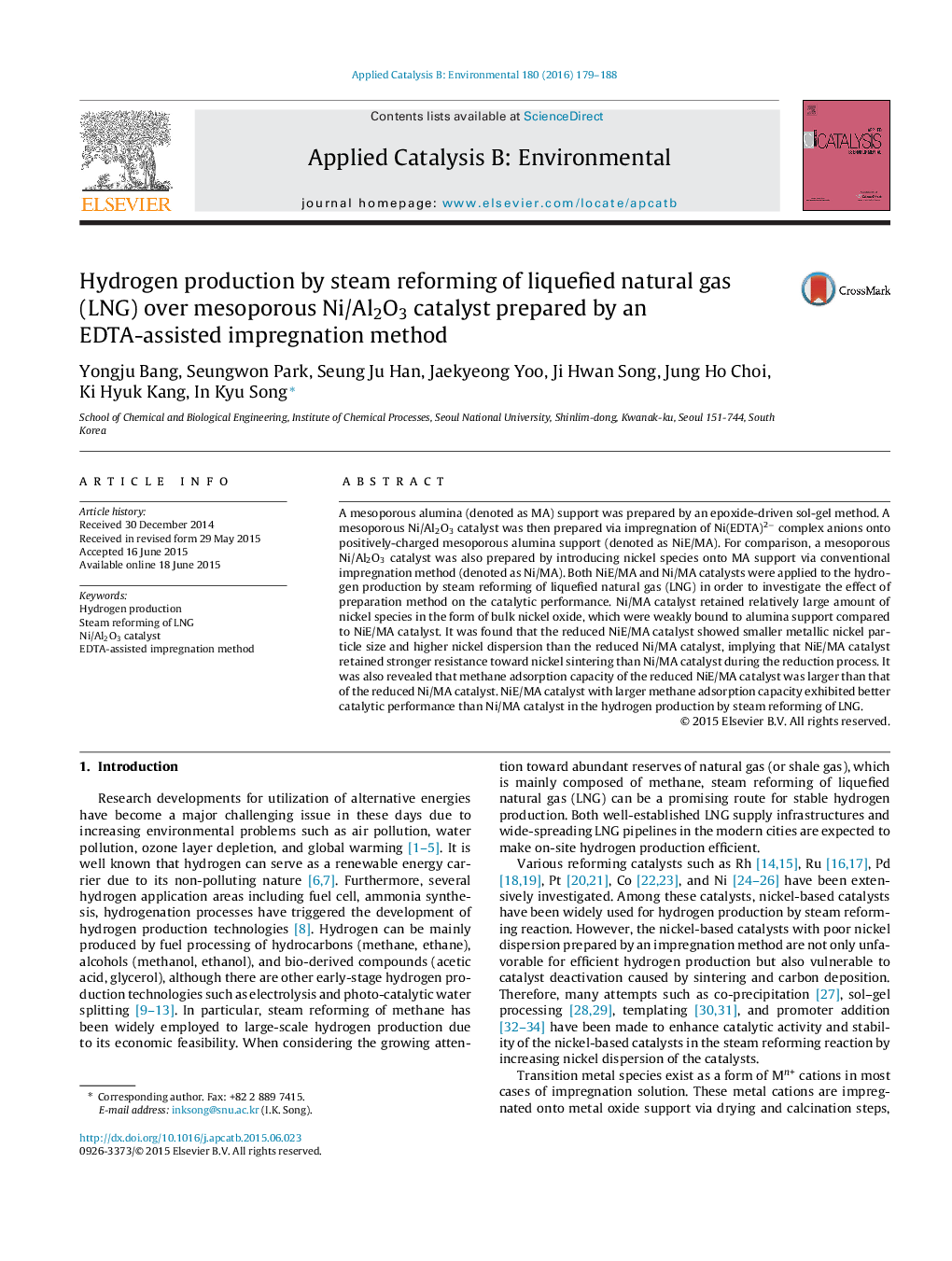| Article ID | Journal | Published Year | Pages | File Type |
|---|---|---|---|---|
| 45233 | Applied Catalysis B: Environmental | 2016 | 10 Pages |
•A mesoporous Ni/Al2O3 was prepared via EDTA-assisted impregnation (NiE/MA).•A mesoporous Ni/Al2O3 was prepared via conventional impregnation (Ni/MA).•Hydrogen was produced by steam reforming of liquefied natural gas (LNG).•NiE/MA catalyst showed better catalytic performance than Ni/MA catalyst.
A mesoporous alumina (denoted as MA) support was prepared by an epoxide-driven sol-gel method. A mesoporous Ni/Al2O3 catalyst was then prepared via impregnation of Ni(EDTA)2− complex anions onto positively-charged mesoporous alumina support (denoted as NiE/MA). For comparison, a mesoporous Ni/Al2O3 catalyst was also prepared by introducing nickel species onto MA support via conventional impregnation method (denoted as Ni/MA). Both NiE/MA and Ni/MA catalysts were applied to the hydrogen production by steam reforming of liquefied natural gas (LNG) in order to investigate the effect of preparation method on the catalytic performance. Ni/MA catalyst retained relatively large amount of nickel species in the form of bulk nickel oxide, which were weakly bound to alumina support compared to NiE/MA catalyst. It was found that the reduced NiE/MA catalyst showed smaller metallic nickel particle size and higher nickel dispersion than the reduced Ni/MA catalyst, implying that NiE/MA catalyst retained stronger resistance toward nickel sintering than Ni/MA catalyst during the reduction process. It was also revealed that methane adsorption capacity of the reduced NiE/MA catalyst was larger than that of the reduced Ni/MA catalyst. NiE/MA catalyst with larger methane adsorption capacity exhibited better catalytic performance than Ni/MA catalyst in the hydrogen production by steam reforming of LNG.
Graphical abstractFigure optionsDownload full-size imageDownload as PowerPoint slide
